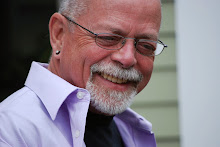Friday, October 28, 2011
A moment of love
When I saw Law of Desire, in 1987, I was a couple of years into writing Ceremonies. I think one of the reasons the movie was so exciting to me--so thrilling—was that Almodovar was showing me something that I hadn’t seen before. I know now that Proust had written about it in In Search of Lost Time, and Christopher Isherwood had written about it in A Single Man, and André Gide in just about everything he wrote. But at the time I hadn’t read all those books—hadn’t read them with understanding—and what I had in front of me was Almodovar’s movie, Law of Desire, with its incredible concluding image.
In 1987 I was writing my book about what happened to all of us in Bangor Maine, during the summer of 1984 after Charles Howard was murdered. But aside from the immediate task of turning our 1984 experiences into a book, I didn’t have an idea of what I was about. I had always had a sense that the book I was writing was not like any other gay books. But different in what way? How? Why?
When Pablo cradled Antonio’s naked body at the end of Law of Desire, the image they make—pieta in front of the altar, the one still alive sobbing with grief—echoes back as far as the Bible and the Gospels, and, of course, courses through six hundred years of Western art. Pablo and Antonio do not make reference to a particular religious image or even to anything religious. What they do, when Pablo cradles Antionio’s body, is to express forgiveness, understanding, regret, gratitude and grief, in the context of the powerful symbolism of a moment of love, in which the younger person has sacrificed himself for the good of the older.
Law of Desire, with its luminous concluding image, urged me to expand my horizons, seek more, attempt larger things, make bigger bets, and change the kind of literature that gay fiction might be, in my novel Ceremonies.

0 comments:
Post a Comment